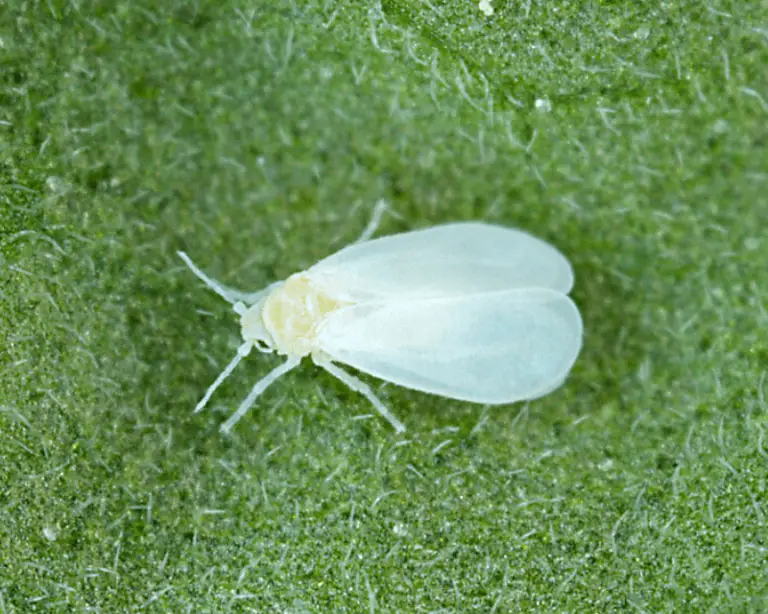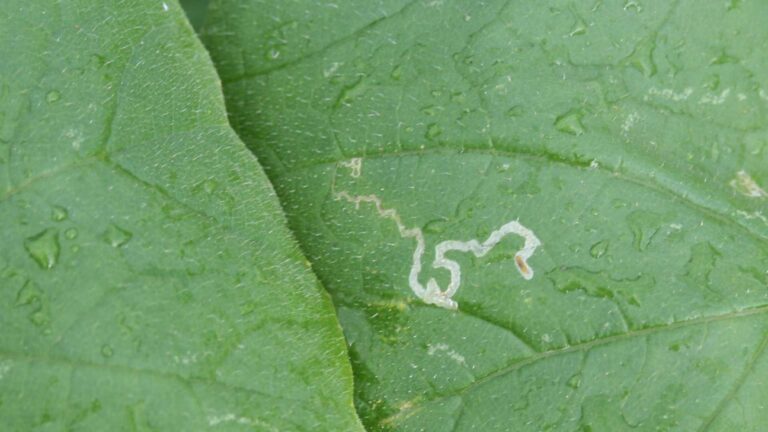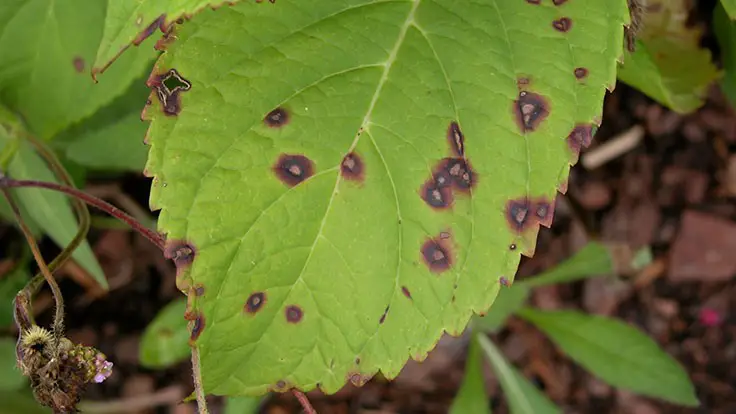Pyrethrin Spray: A History and How to Use This Organic Pesticide
Table of Contents
- Introduction
- Understanding Pyrethrin
- The Effectiveness of Pyrethrin Spray
- Applications of Pyrethrin Spray
- How to Use Pyrethrin Spray
- Safety Precautions
- Conclusion
- Recap of Key Points
- Encouragement for Sustainable Pest Control Practices
Introduction
The “Overview of Pyrethrin Spray” section serves as an introduction to the topic, providing essential background information and setting the stage for more in-depth exploration. Here’s an example of how this section might be structured:
Overview of Pyrethrin Spray
Introduction to Pyrethrin:
- Definition and basic characteristics.
- Derived from chrysanthemum flowers – a natural origin.
Historical Context:
- Brief history of pyrethrin’s use in pest control.
- Evolution from traditional to modern applications.
Chemical Composition:
- Explanation of the key compounds found in pyrethrin.
- How these compounds contribute to its insecticidal properties.
Environmental Considerations:
- Eco-friendly aspects of pyrethrin spray.
- Biodegradability and reduced environmental impact compared to synthetic alternatives.
Versatility in Pest Control:
- Overview of the broad spectrum of pests targeted by pyrethrin.
- Applications in both outdoor and indoor settings.
Current Trends and Popularity:
- Increasing adoption of organic farming and gardening.
- Consumer interest in natural, chemical-free alternatives.
By covering these key points, the “Overview of Pyrethrin Spray” section provides readers with a foundational understanding of what pyrethrin spray is, its historical context, chemical makeup, environmental implications, applications, and its current status in the world of pest control.
Brief History and Origins of Pyrethrin Spray
- Ancient Roots:
- Pyrethrum, the natural insecticide found in chrysanthemum flowers, has been used for centuries.
- Ancient civilizations, including the Persians, Greeks, and Romans, employed crushed chrysanthemum flowers for insect-repellent properties.
- Rediscovery in the 19th Century:
- European explorers in Africa rediscovered pyrethrum’s insecticidal qualities in the 19th century.
- The active components, pyrethrins, were identified and isolated during this period.
- Introduction to Modern Agriculture:
- Pyrethrum gained prominence in the early 20th century as a key component in insecticides for agriculture.
- The development of standardized pyrethrin extracts enhanced its effectiveness.
- Synthetic Pyrethroids Emergence:
- Starting in the mid-20th century, synthetic variations of pyrethrins, known as pyrethroids, were developed for broader use.
- These synthetic compounds retained the insecticidal properties of pyrethrins but with increased stability and persistence.
- Global Recognition and Regulation:
- Pyrethrins and synthetic pyrethroids gained widespread acceptance for their efficacy and reduced environmental impact.
- Regulatory frameworks were established to ensure safe use in agriculture and household applications.
- Contemporary Resurgence:
- In recent decades, there has been a resurgence of interest in natural and organic pest control methods.
- Pyrethrin spray has regained popularity as a preferred choice among environmentally conscious consumers and in organic farming.
- Understanding the historical roots and evolution of pyrethrin spray provides valuable context for its current applications and ongoing development as a natural pest control solution.
Throughout history, pyrethrum has been widely utilized for its exceptional insecticidal properties. The ancient Egyptians were among the first civilizations to recognize and harness the power of this natural pesticide. They would dry and grind pyrethrum flowers into a fine powder, which they then applied to protect their crops from destructive pests.
The Greeks and Romans also valued pyrethrum for its insecticidal qualities. During the Roman Empire, pyrethrum was utilized to repel insects and pests in public places such as markets, amphitheaters, and baths. Historical records reveal that the Romans used pyrethrum to deter mosquitoes, fleas, and lice, making it indispensable for maintaining hygiene and comfort.
As the centuries passed, the use of pyrethrum continued to spread across different cultures and regions. In medieval Europe, pyrethrum was commonly employed as a lice and flea remedy. The renowned herbalist and physician Hildegard von Bingen even promoted pyrethrum as an effective treatment for head lice in her influential medical texts.
Understanding Pyrethrin

Source and Extraction of Pyrethrin from Chrysanthemum Flowers
- Botanical Origin:
- Chrysanthemum cinerariifolium: Pyrethrin is derived primarily from specific varieties of chrysanthemum, particularly Chrysanthemum cinerariifolium, commonly known as the Dalmatian chrysanthemum.
- Dalmatia and Kenya: Historically, Dalmatia (Croatia) and Kenya have been primary regions for cultivating chrysanthemum flowers for pyrethrin production.
- Flower Composition:
- Pyrethrum Daisy: Chrysanthemum flowers contain pyrethrin compounds in their seed cases. The highest concentration is in the pyrethrum daisy’s flower heads.
- Harvesting Process:
- Selective Harvesting: Flowers are carefully harvested when they reach full bloom, ensuring maximum pyrethrin content.
- Handpicking or Mechanical Harvesting: Methods vary and can involve handpicking or mechanical harvesting.
- Drying and Processing:
- Sun-Drying: Harvested flowers are traditionally sun-dried to preserve the potency of pyrethrins.
- Mechanical Processing: Advanced methods involve mechanical processing to extract pyrethrins efficiently.
- Extraction Methods:
- Solvent Extraction: Using solvents like hexane or ethanol to isolate pyrethrins from dried flowers.
- Steam Distillation: Employing steam to extract essential oils containing pyrethrins.
- Refinement and Purification:
- Filtration and Distillation: Further refinement through filtration and distillation processes to obtain concentrated pyrethrin extracts.
- Quality Control Measures: Rigorous quality control ensures the purity and potency of the final product.
- End Product:
- Pyrethrin Concentrate: The extracted substance is processed into a concentrated form, ready for formulation into insecticidal products such as pyrethrin spray.
Understanding the meticulous process of sourcing and extracting pyrethrin from chrysanthemum flowers highlights the natural origin and purity of this botanical insecticide.
Chemical Composition of Pyrethrin and Its Environmental Impact
- Active Compounds:
- Pyrethrins I and II: The primary active compounds in pyrethrin, are derived from chrysanthemum flowers.
- Cinerins: Additional components contributing to the insecticidal properties.
- Mechanism of Action:
- Disruption of Nervous System: Pyrethrins target the nervous systems of insects, leading to paralysis and death.
- Rapid Breakdown: Their fast breakdown in the environment reduces persistence.
- Low Mammalian Toxicity:
- Selective Toxicity: Pyrethrins exhibit low toxicity to mammals due to differences in nerve cell structure between insects and mammals.
- Rapid Metabolism: Metabolized quickly in mammals, reducing the risk of accumulation.
- Eco-Friendly Characteristics:
- Biodegradability: Pyrethrins break down rapidly in sunlight and air, minimizing environmental impact.
- Low Residue: Leaves minimal residue on crops and surfaces.
- Effect on Non-Target Organisms:
- Minimal Impact on Beneficial Insects: Pyrethrins are less harmful to beneficial insects such as bees and ladybugs compared to synthetic alternatives.
- Short Residual Activity: Their short-lived activity further minimizes non-target exposure.
- Advantages Over Synthetic Pesticides:
- Reduced Environmental Persistence: Pyrethrin’s natural origin and rapid degradation distinguish it from many synthetic pesticides.
- Safer for Aquatic Life: Lower toxicity to aquatic organisms, making it a preferred choice for areas near water bodies.
- Regulatory Approval:
- Environmental Safety Assessments: Regulatory agencies globally conduct rigorous assessments to ensure pyrethrins’ safety for the environment and human health.
- Compliance with Standards: Pyrethrins typically meet or exceed safety standards set by regulatory bodies.
Understanding the chemical composition and environmental impact of pyrethrin emphasizes its eco-friendly nature and its role as a safer alternative in pest control, aligning with sustainable and environmentally conscious practices.
The Effectiveness of Pyrethrin Spray
Mechanism of Action Against Pests
- Neurological Disruption:
- Pyrethrin targets the nervous system of insects upon contact.
- Rapidly interferes with nerve impulse transmission, leading to paralysis.
- Knockdown and Quick Mortality:
- Exhibits a rapid knockdown effect, immobilizing pests almost immediately.
- Swift mortality ensures efficient pest control.
- Contact and Residual Activity:
- Acts on contact, making it effective against flying and crawling insects.
- Residual activity persists for a short duration, offering ongoing protection.
- Mode of Application:
- Suitable for various application methods, including sprays, fogging, and dusts.
- Versatile enough for both indoor and outdoor pest control.
Comparison with Synthetic Pesticides
- Environmental Impact:
- Low Residue: Pyrethrin spray leaves minimal residue on crops and surfaces.
- Biodegradability: Breaks down rapidly in sunlight and air, reducing environmental persistence compared to many synthetic alternatives.
- Mammalian Toxicity:
- Low Mammalian Toxicity: Pyrethrins exhibit low toxicity to mammals due to their rapid metabolism.
- Selective Action: Targets insects with different nerve cell structures than mammals, minimizing health risks to humans and pets.
- Effect on Beneficial Insects:
- Less Harmful to Bees: Pyrethrins have a lower impact on bees and other beneficial insects.
- Short Residual Activity: Reduces the risk of prolonged exposure to non-target organisms.
- Resistance Management:
- Complex Mode of Action: Pyrethrins have a unique mode of action, making it difficult for pests to develop resistance.
- Rotation with Synthetic Pesticides: Effective in resistance management when rotated with synthetic pesticides.
- Application Flexibility:
- Indoor and Outdoor Use: Pyrethrin spray is suitable for use in both indoor and outdoor settings.
- Agricultural and Residential Applications: Versatility in applications for diverse pest control needs.
Understanding the mechanisms of action and comparing pyrethrin spray with synthetic pesticides highlights its efficacy against pests while underscoring its environmental and safety advantages in pest management practices.
Applications of Pyrethrin Spray
Pyrethrin spray is a natural insecticide derived from chrysanthemum flowers, specifically from the pyrethrum plant. It is commonly used for various pest control applications, both in outdoor and indoor settings. Here are some applications of pyrethrin spray:
- Garden and Outdoor Pest Control:
- Vegetable Gardens: Pyrethrin spray is effective in controlling a variety of pests that can damage vegetable crops. It targets aphids, caterpillars, beetles, and other common garden pests.
- Flower Beds: These can be used to protect ornamental flowers from insects that may feed on them.
- Fruit Trees: Pyrethrin spray is often used on fruit trees to control pests like mites, scale insects, and caterpillars.
- Indoor Use for Household Pests:
- Indoor Plants: Pyrethrin spray is suitable for controlling pests on indoor plants, such as spider mites, whiteflies, and aphids.
- Household Pests: It can be used to manage common household pests like ants, cockroaches, flies, mosquitoes, and spiders.
- Cracks and Crevices: Pyrethrin spray can be applied to cracks and crevices where pests may enter the home.
- Pet Care:
- Pet Bedding: Pyrethrin spray can be used on pet bedding to repel or eliminate fleas and ticks.
- Pet Areas: Spraying pet areas, such as kennels or outdoor spaces where pets play, can help control pests that may bother animals.
- Livestock and Poultry:
- Livestock Housing: Pyrethrin spray is sometimes used in livestock housing to control flies and other insects that can bother animals.
- Poultry Houses: It can be applied in poultry houses to manage mites and lice that affect chickens and other birds.
- Public Spaces:
- Parks and Recreation Areas: Pyrethrin spray can be used in public spaces to control mosquitoes and other flying insects.
- Outdoor Events: It is sometimes employed to create a pest-free environment for outdoor events and gatherings.
- Organic Farming:
- Certified Organic Farming: Pyrethrin is approved for use in organic farming, making it a preferred choice for farmers who follow organic practices.
- Greenhouses:
- Greenhouse Pest Control: Pyrethrin spray is used in greenhouses to manage a variety of pests without leaving harmful residues on plants.
It’s important to note that while pyrethrin is considered relatively safe for humans and pets when used as directed, it’s still essential to follow the product instructions and take necessary precautions during application. Additionally, rotating or combining pyrethrin with other pest control methods can help prevent the development of resistance in target pests.
How to Use Pyrethrin Spray
Using pyrethrin spray effectively involves proper mixing, dilution, and application techniques. Here are guidelines to ensure optimal results while maintaining safety:
Read and Follow Product Instructions:
- Always read and understand the instructions provided by the manufacturer on the product label.
- Follow the recommended application rates, mixing ratios, and safety precautions.
2. Wear Protective Gear:
- Use personal protective equipment (PPE) such as gloves, goggles, and a mask to protect yourself during mixing and application.
3. Proper Mixing and Dilution:
- Measure Accurately: Use accurate measuring tools to ensure the correct amount of pyrethrin concentrate is mixed.
- Mix in a Well-Ventilated Area: Dilute pyrethrin in a well-ventilated space to minimize inhalation risks.
- Use Clean Water: Use clean water for dilution, preferably at room temperature.
- Mix Thoroughly: Stir or shake the solution thoroughly to ensure even distribution of pyrethrin.
4. Choose the Right Sprayer:
- Use a high-quality sprayer appropriate for the application (handheld sprayer, backpack sprayer, or hose-end sprayer).
- Clean the sprayer thoroughly before use to avoid cross-contamination with other chemicals.
5. Targeted Application:
- Identify Pests: Identify the specific pests you want to target to tailor the application to their habits and vulnerabilities.
- Focus on Problem Areas: Direct the spray to problem areas where pests are likely to hide or breed.
6. Timing and Frequency:
- Apply pyrethrin spray during the early morning or late afternoon when the wind is calm, and beneficial insects are less active.
- Repeat applications as necessary, following the manufacturer’s recommendations for frequency.
7. Avoid Overapplication:
- Follow recommended dosage rates to prevent overuse, reduce environmental impact, and avoid potential harm to non-target organisms.
- Overuse may also lead to pests developing resistance, so it’s essential to rotate or combine treatments.
8. Post-Application Considerations:
- Keep people and pets away from treated areas until the spray has dried.
- If spraying indoors, ventilate the area well during and after application.
- Clean and store equipment properly after use.
9. Rotate with Other Pest Control Methods:
- To prevent the development of resistance, consider rotating pyrethrin with other types of insecticides or pest control methods.
10. Storage and Disposal:
- Store pyrethrin products in a cool, dry place away from direct sunlight.
- Follow local regulations for the disposal of containers and unused products.
Remember that while pyrethrin is generally considered safe, it’s essential to prioritize safety by following guidelines, wearing protective gear, and using the product as directed. If you have specific questions or concerns, consult with a pest control professional or the product manufacturer for personalized advice.
Safety Precautions
Safety is paramount when handling any pesticide, including pyrethrin spray. Here are some guidelines for safe handling and mitigating potential risks associated with pyrethrin:
1. Read and Follow the Product Label:
- Always read and follow the instructions on the product label.
- Pay attention to recommended dosage rates, mixing ratios, and safety precautions.
2. Use Personal Protective Equipment (PPE):
- Wear appropriate protective gear, including gloves, goggles, and a mask, when handling and applying pyrethrin spray.
- Follow the specific PPE recommendations provided on the product label.
3. Avoid Contact with Skin and Eyes:
- Minimize skin contact with pyrethrin by wearing long sleeves, pants, and closed-toe shoes.
- In case of contact, wash the affected area with plenty of water and seek medical attention if irritation persists.
- Avoid touching the face and eyes while handling the pesticide.
4. Minimize Inhalation Risks:
- Mix and apply pyrethrin spray in a well-ventilated area to reduce inhalation risks.
- Wear a mask or respirator if recommended by the product label, especially when working with concentrated forms of the pesticide.
5. Prevent Ingestion:
- Avoid eating, drinking, or smoking while handling pyrethrin.
- Wash hands thoroughly with soap and water after handling the pesticide.
6. Protect Children and Pets:
- Keep children and pets away from treated areas during and after application.
- Store pyrethrin products out of reach of children and pets.
7. Environmental Considerations:
- Avoid spraying near water sources, storm drains, or areas where runoff may occur.
- Be cautious when applying pyrethrin near sensitive plants, aquatic environments, or beehives.
- Follow guidelines for minimizing impact on non-target organisms.
8. Proper Mixing and Application:
- Mix and apply the pesticide in accordance with the recommended rates and procedures.
- Avoid overapplication to prevent unnecessary exposure and environmental impact.
9. First Aid:
- Familiarize yourself with first aid measures recommended on the product label.
- Have an emergency first aid kit on hand when working with pesticides.
10. Storage and Disposal:
- Store pyrethrin products in their original containers in a cool, dry place.
- Follow local regulations for the proper disposal of containers and unused pesticide.
11. Emergency Response:
- In case of accidental exposure or ingestion, contact a poison control center or seek medical attention immediately.
- Keep emergency contact information readily available.
12. Training and Education:
- Ensure that those handling pyrethrin spray are adequately trained and knowledgeable about the product.
- Stay informed about the potential risks associated with pyrethrin and any updates to safety guidelines.
It’s crucial to prioritize safety and follow these guidelines to minimize risks associated with pyrethrin spray. If you have specific concerns or questions about the safe use of pyrethrin, consult with a local agricultural extension office, a pest control professional, or the product manufacturer for personalized advice based on your specific situation.
Conclusion
In conclusion, here is a recap of key points regarding the use of pyrethrin spray and encouragement for sustainable pest control practices:
Recap of Key Points:
- Applications of Pyrethrin Spray:
- Garden and outdoor pest control for crops, flowers, and fruit trees.
- Indoor use for household pests and on indoor plants.
- Pet care, livestock, and poultry applications.
- Public spaces, organic farming, and greenhouses.
- How to Use Pyrethrin Spray:
- Read and follow product instructions carefully.
- Wear appropriate protective gear during mixing and application.
- Mix and dilute accurately in a well-ventilated area.
- Choose the right sprayer and target application areas.
- Time application for maximum efficacy and safety.
- Avoid overapplication and rotate with other pest control methods.
- Safety Precautions:
- Read and follow the product label for specific safety guidelines.
- Use personal protective equipment (PPE) such as gloves, goggles, and a mask.
- Avoid skin and eye contact, minimize inhalation risks, and prevent ingestion.
- Protect children and pets, consider environmental impact, and follow proper storage and disposal procedures.
- Be prepared with first aid measures and emergency contact information.
Encouragement for Sustainable Pest Control Practices:
- Integrated Pest Management (IPM):
- Embrace Integrated Pest Management (IPM) practices, which involve a combination of cultural, biological, and chemical control methods.
- Rotate pesticides, including pyrethrin, with other control measures to prevent resistance.
- Consider Beneficial Insects:
- Encourage the presence of beneficial insects that naturally control pest populations.
- Avoid unnecessary harm to pollinators and other beneficial organisms.
- Organic and Sustainable Agriculture:
- Choose organic and sustainable farming practices whenever possible.
- Use pyrethrin as part of a holistic approach to pest control within an organic framework.
- Environmental Responsibility:
- Minimize the environmental impact of pesticides by following application guidelines.
- Be aware of the potential effects on non-target organisms and ecosystems.
- Education and Awareness:
- Stay informed about the latest developments in pest control and safety practices.
- Share knowledge and encourage others to adopt sustainable pest control practices.
By adhering to proper usage, and safety precautions, and embracing sustainable pest control practices, individuals can contribute to effective pest management while minimizing environmental impact and promoting long-term ecological balance. Integrated approaches that prioritize safety and sustainability are key to fostering healthy ecosystems and resilient agricultural systems.

Kanike Sreekanth, a prolific writer at SouthElMonteHydroponics, brings a unique blend of creativity and scientific rigor to the table. With a degree in Horticulture from a prestigious institution, Kanike’s expertise spans hydroponic farming, plant biology, and agricultural sustainability. Their passion for exploring innovative cultivation methods and promoting environmental stewardship drives them to uncover new insights in the realm of hydroponics. Kanike’s writing serves as a conduit for sharing their knowledge and inspiring others to embrace alternative farming practices for a more sustainable future.





